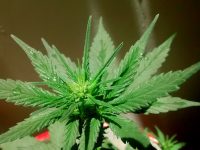These aren’t the foods you’re looking for.
When you opt for the extra-virgin olive oil at the grocery store, you may be purchasing a diluted knock-off with cheaper soybean oil instead. And that half-price lobster roll at your local fast-food chain isn’t as much of a steal as you think it is.
Award-winning journalist Larry Olmsted says consumers are being tricked when it comes to food shopping. What you’re really buying is ‘fake food’, or what he describes as “a massive industry of bait and switch, where you get something other than promised.”
Olmsted explores fraud in the food industry in his new book, “Real Food/Fake Food: Why You Don’t Know What You’re Eating and What You Can Do About It.” He hopes to bring light to the scandal, helping consumers shop for a real deal rather than getting taken to the cleaners.
“Really good olive oil, real Kobe beef — it’s just not what you’re usually getting. And I want people to enjoy these foods,” Olmsted told CBS This Morning. “They taste better and they are generally much better for you.”
What’s the deal behind getting fake food? Why aren’t we getting what we pay for?
Olmsted points to poor regulation, particularly the leniency on food labeling. To complicate the issue is all of these cases aren’t illegal.
“Some of the adulteration — when they cut olive oil with other oils or substances, they cut honey with corn syrup — that is a violation of the law. But a lot of it is labeling issues that are unregulated,” Olmsted said. “Like ‘natural’ would be the perfect example. You could slap ‘natural’ on pretty much any food product. It’s meaningless.”
Here’s a shortlist of commonly sold fake foods that are bootleg versions of what you think you’re buying:
- Kobe beef
- Seafood
- Honey
- Coffee
- Orange juice
- Apple juice
- Wine
- Rice
- Cheese
There’s no better example of this food scandal than the red snapper, the unofficial mascot of the fake food business. A study by Oceana, a nonprofit that tests seafood authenticity in the U.S. using DNA, found consumers getting true red snapper under 6% of the time. You’re likely getting tilefish or tilapia substitutes rather than the fine fish.
The entire seafood industry is “so rife with fakery — both legal and illegal — that it boggles the mind”, says Olmsted. Touching back on the problems with regulations, it’s a glaring concern in the seafood industry. Ninety-one percent of seafood consumed in America is imported, yet FDA law stipulates only a mere 2% needs to be inspected per year. And even that measly 2% mark isn’t hit with consistency.
“They’re lucky if they inspect half a percent,” Olmsted says. “It’s a low bar and they can’t even come close to making it.”
Olmsted provides shopper’s tips on how to ensure they’re getting what they pay for throughout his book. A few highlights to becoming an informed shopper include:
- Reading labels closely
- Avoid artificial colors and “natural flavors”
- Buy whole rather than processed foods, when possible
- Cook more, which gives you control over your own ingredients
Photo Credit: Sorbis/Shutterstock












